Scott Hamilton – 17 April, 2014
The Ponsonby mural symbolises the problems that success and mainstream acceptance can bring for an avant-garde art form. Where graffiti was once the medium in which marginalised people asserted their identity and issued demands, in a mixture of esoteric and coruscating images and language, it can now serve as a pleasant decoration on the walls of wealthy suburbs.
EyeContact Essay #9
One Saturday last month I went to Otara’s Fresh Gallery to see Benjamin Work’s first solo exhibition, and to hear a lecture by the young Tongan-New Zealand painter.
Work explained that he had learned about art as a teenager, on the stretch of rail between Newmarket and Morningside. He described how, late at night in the 1990s, Auckland’s rail lines became liminal, lawless zones, where gangs of teenagers painted and skirmished. At the end of the decade Work was recruited into the elite graffiti crew which was then known as The Most Dangerous, and has since renamed itself The Most Dedicated.
As Work detailed the rituals and conflicts of Auckland’s rival graffiti crews, he might have been talking about the fractious art movements that made the word modernism notorious in the early decades of the twentieth century. Like the graffiti painters of the Newmarket to Morningside line, the Futurists and Dadaists and Surrealists raged against both mainstream society and their artistic rivals, expressing themselves with their fists as well as their paints.
But the avant-garde outlaws of a century ago have been made respectable and collectable by generations of art critics and curators. By the time I studied seventh form art history in the early nineties, the Futurist Manifesto was required reading, and the likes of Kasimir Malevich and Kurt Schwitters were presented as great artists, in the tradition of da Vinci and Rembrandt, rather than as dangerous madmen.
As Work’s talk at the Fresh Gallery showed, Auckland’s graffiti outlaws are treading their own path to respectability. In the ‘90s they were chased by cops and denounced by populist politicians; today they are invited to international arts festivals, and supplied with virginally white walls by liberal local councillors and hipster developers.
Work is as surprised as anyone by the transformation in the status of graffiti art. “I never thought, standing on the tracks at Newmarket, that this stuff would take me around the world” he told the audience at Fresh, before showing some footage of an appearance The Most Dedicated made at a festival in Miami.
When Work thanked ‘Banksy’ for helping change the status of graffiti art, I became confused, and a little disturbed, because ‘Banksy’ had been the nickname of John Banks during his long-gone heyday as Auckland’s mayor. Had this painfully conservative politician, who liked nothing better than excoriating Auckland’s taggers on talkback radio, been a secret ally of Benjamin Work and his crew? I tried to imagine John Banks, in his crisp blue jacket and uncomfortably tight tie, scrambling down the gravel embankment beside the Morningside railway station with a spray can in hand, ready to join The Most Dangerous in a night of mayhem. This distressing vision dissolved when Work reminded me that Banksy is also the name of the world’s most famous graffiti artist, a mysterious Briton who used to sneak his handiwork into galleries and museums, and now gets commissions from the same institutions.
The mainstreaming of graffiti is putting artists like Benjamin Work into some contradictory situations. In Ponsonby, that formerly working class and Polynesian suburb which has been ethnically cleansed, over a period of decades, by real estate agents and restaurateurs, a number of graffiti artists, including members of The Most Dedicated, were recently asked to decorate the high white walls that had been thrown up around a building site abandoned after the Global Financial Crisis of 2008. Working class, mostly Polynesian artists were being used to beautify a suburb where few of them could ever think about buying a home.
The Ponsonby mural symbolises the problems that success and mainstream acceptance can bring for an avant-garde art form. Where graffiti was once the medium in which marginalised people asserted their identity and issued demands, in a mixture of esoteric and coruscating images and language, it can now serve as a pleasant decoration on the walls of wealthy suburbs.
But the section of the Ponsonby wall painted by Benjamin Work defied the mainstreaming of graffiti. In place of the cheery, hyper-detailed, easily explicable offerings of many of his fellow artists, Benjamin had produced a series of austere and mysterious portraits of slender, semi-abstract, interlocking figures. Some of the figures held spears, and one of them wore a stylised version of the pala tavake, the feather head dress that dignified the Tu’i Tonga, the ancient ruler of the Friendly Islands. The painting, which Work had named Royal Priesthood, was visually arresting yet recondite. It was art, not mere decoration, and it pointed viewers toward a time and place distant from and radically different to twenty-first century Ponsonby.
Like his show at Fresh Gallery, Benjamin Work’s Ponsonby mural shows off the new style of painting he has developed in the last couple of years.(1) During his talk at Fresh, Benjamin explained that he had gotten into an artistic ‘rut’, and become dissatisfied with the motifs and style he had learned from North America’s graffiti artists. He began searching the culture and history of Tonga for a different visual language and new ideas.
As the only sizeable indigenous Pacific society to avoid colonisation in the nineteenth or twentieth century, Tonga has always fascinated scholars, and the academic literature on the country is vast and rich. After exploring some of the essays, monographs, and books that historians, anthropologists, sociologists, and ethnologists have devoted to Tonga, Work encountered the studies that Andy Mills, an English anthropologist, had made of Tongan war clubs, or ‘akau tau, in the first decade of this century.(2)
Mills’ research took him through the kava clubs of Tongatapu, where old men told him stories about weapons that could rise from their resting places and strike at the enemy without the help of human hands, to the museums of the West, where clubs stolen or bought by missionaries and traders have found uneasy homes. Work was particularly interested by Mills’ creation, for his PhD thesis, of a series of vectorised reproductions of the tiny carvings that adorn many ‘akau tau. Looking at the large, sharp images that Mills had obtained with his vectorising software, Work realised that akau tau were not just weapons, but the carriers of sets of elegant and complicated symbols. He began to paint these symbols.
By finding in the Tongan past a modern visual language, Benjamin Work has followed the example of Filipe Tohi, the godfather of contemporary Tongan art. At the end of the 1980s Tohi travelled through the villages of his homeland, seeking out churches and halls held together by lashings of coconut fibre, rather than by the nails that Tongan builders began using late in the nineteenth century.
Tohi discovered, in the intricate patterns of lashings on the ceiling of one of Tonga’s oldest churches, a sort of code in which information about genealogy, navigation, and climate was hidden and preserved. He has spent much of his career rendering that code in three dimensions, using modern materials like plastic as well as more traditional ones like wood. The sleek lines and abstract forms of Tohi’s sculptures recall the work of visionary modernists like Malevich and Agnes Martin, and one critic aptly called him ‘an artist of the ancient future’. Benjamin Work’s new paintings have the same mixture of ancient information and modernist form that distinguishes Filipe Tohi’s art.
If Work has learned visual lessons from Andy Mills and Filipe Tohi, then ‘Okusitino Mahina and Niel Gunson have given him a new understanding of history. Speaking at Fresh Gallery, Work explained that he had spent hours in conversation with Mahina, who has published many studies of Tongan understandings of time and space, or ta and va, during his long career as an anthropologist and aesthetician.
Mahina is a former student of Niel Gunson, the missionary-turned-academic who was one of the first palangi to study the ways Tongans view history. In his influential essay ‘Tongan Historiography: Shamanic Views of Time and History’ Gunson suggested that Tongans have traditionally experienced time as cyclical. Important personalities and events take on an archetypal quality, because they recur in one era after another. The Western notion of time as a one-way road into the future, and of events as individual and unrepeatable is, Gunson maintained, alien to traditional Tongan thought. During a talk in Auckland a couple of years ago, ‘Okusitino Mahina expressed the same point with the beautiful phrase “In Tonga, we walk forward into the past”.(3)
The Tongan view of history as cyclical can make even apparently revolutionary events look like recurrences of old patterns. In the first half of the nineteenth century a chief named Taufa’ahau used Wesleyan printing presses and muskets to Christianise Tonga and make himself its ruler. Taufa’ahau seemingly transformed Tongan society, but accounts of his life often make him an archetypal rather than iconoclastic figure. Sione Latukefu, Tonga’s first academic historian, emphasised the supposed parallels between the lives of Taufa’ahau and Jesus, and also likened Tonga’s first Christian king to his Tu’i Tonga predecessors.
Benjamin’s first solo exhibition showed how he had turned his studies of Tongan culture and history into powerful art. Working with acrylic on wood, he had created a series of minimal sharp-edged images that referred simultaneously to Tonga’s past, present, and future. The first work on display, Laumaile ma’oni’oni (Pure Spirit), showed a stylised bird floating through a void, and seemed to refer both to the Bible and to Tongan legend. Work’s bird might have been the dove sent by Noah to search for land; equally, though, it could have been the sky god Tangaloa ‘Autongolongo, who disguised himself as a plover and flew to the tiny island of ‘Ata, in the far south of Tonga, to drop a seed from which a tree, a worm, and the ancestors of the Tongan people would grow. Gunson and Mahina would presumably argue that, from a Tongan perspective, there is no need to choose between Tangaloa ‘Autolongolongo and Noah: they are simply two manifestations of the same archetype.
Work’s bird hung next to a painting named Nimatapu, after the bodyguards who were traditionally buried with a Tu’i Tonga, so that they could help their master in the next world. In his lecture at Fresh Gallery, Work made a parallel between the slaying of the king’s guards and the crucifixion of Jesus Christ, an event depicted in two of his exhibition’s paintings. Although aware of the differences between Tonga’s ancient and modern religions, Work considered them connected by the archetype of sacrifice. He might have quoted Allen Curnow’s great poem Assasinato Moro, which also makes bloodshed into a link between the northern hemisphere and the South Pacific:
All the seas are one sea,
The blood one blood
and the hands one hand…
the tales are all one tale
dead men tell, the minor
characters the living…
The title of Benjamin Work’s exhibition referred to red’s archetypal role in Tongan history. Oral history maintains that Aho’eitu, the first Tu’i Tonga, was torn apart and eaten by his divine half-brothers, then reconstructed and reanimated by his father Tangaloa, whose hands worked these miracles in a bowl of his son’s bloody vomit. The pala tavake was full of blood-red feathers torn from rare highland parrots. Taufa’ahau gave the modern Tongan state its first flag, because the colour symbolised both tradition and the blood of Christ. Red covers the uniforms of Tonga’s sports teams.
Red has been the favourite colour of Tongan dissidents and outlaws, as well as the country’s rulers and heroes. The prophetess ‘Ofa Mele Longosai, who in the 1960s and ‘70s proclaimed herself the successor to Christ, and railed against the decadence of Tonga’s elite and the supposed dangers of modern medicine from her stronghold in the bush outside Nuku’alofa, ordered her followers to wear red coats whenever they appeared in public; her movement was soon nicknamed ‘the Redcoat church’. Many Tongan gangsters wear red, in imitation of outfits like America’s Bloods and Aotearoa’s Mongrel Mob.
By using red in the paintings he showed at Fresh Gallery, Work reinforced the connections between the events he depicted. The same colour that adorned the Tu’i Tonga’s head ran down the cross of Christ, and beautified the bird that flew over Mount Ararat, or descended toward ‘Ata.
Benjamin Work’s study of his ancestors’ culture and history has transformed his art. Work’s new paintings not only give us a glimpse into an unfamiliar and fascinating history - they show us a different way of understanding history.
Scott Hamilton
(1) Perhaps the most remarkable of the many murals Benjamin Work has painted in his new style is a work that appeared in Glen Innes last October, and combined a stylised portrait of the Tu’i Tonga with the blood-red field and white circle of the flag of Nazi Germany. I have posted a discussion of this controversial painting on my blog at: http://readingthemaps.blogspot.co.nz/2014/04/kim-dotcom-benjamin-work-and-tongan.html
(2) Andy Mills described some of his research in an essay published in a 2009 issue of the Journal of the Polynesian Society. ‘Akau Tau: Contextualising Tongan War Clubs’ can be read at: http://www.jps.auckland.ac.nz/document//Volume_118_2009/Volume_118,_No._1/Akau_tau%3A_Contextualising_Tongan_war_clubs,_by_Andy_Mills,_p_7-46/p1
(3) ‘Okusitino Mahina made his comment at a public discussion held after the showing of a rough cut of Paul Janman’s film Tongan Ark at Artspace in December 2011. I described the discussion and Mahina’s role in it in my blog post ‘Boarding the Ark’, which was republished in 2012 in the special Oceania issue of the literary journal brief. The post can be read: http://readingthemaps.blogspot.co.nz/2011/12/boarding-ark.html
Recent Comments
John Hurrell
Books4Tonga - Donated books and volunteers needed! Cynthia Wallis Barnicoat has launched an appeal for the donation of books to ...
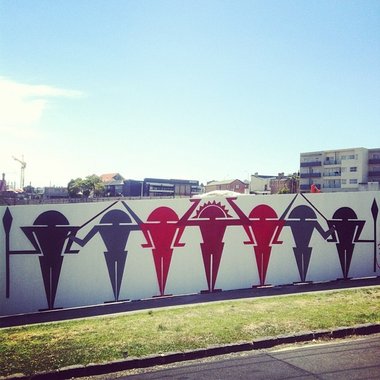
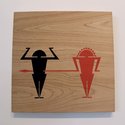
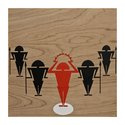
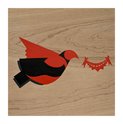
 Advertising in this column
Advertising in this column Two Rooms presents a program of residencies and projects
Two Rooms presents a program of residencies and projects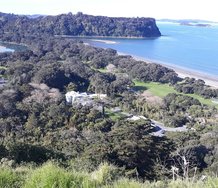
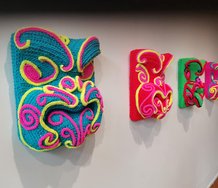

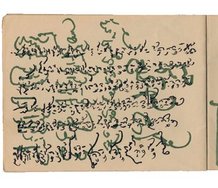
This Discussion has 1 comment.
Comment
John Hurrell, 4:39 a.m. 3 July, 2019 #
Books4Tonga - Donated books and volunteers needed!
Cynthia Wallis Barnicoat has launched an appeal for the donation of books to Books4Tonga:
The venue for the final drop-off is confirmed as: St Albans Church, 443 Dominion Rd, Mt Eden
Saturday 3 August, drop off from 9am - 12pm.
AND we need helpers please! We are SEEKING VOLUNTEERS TO HELP SORT AND PACK BOOKS on Saturday 3 August from 9am, Sunday 4 August from 3pm and possibly Monday 5 August from 9am, at St Albans Church.
Please contact me if you would like to help on books4tonga@live.com
Malo 'aupito! Thank you so much!
Cynthia / Wallis
(We cannot accept car manuals, text books, encyclopedias, self-help books, cook books, or books older than 15 years unless they are classics in good condition)
Participate
Register to Participate.
Sign in
Sign in to an existing account.